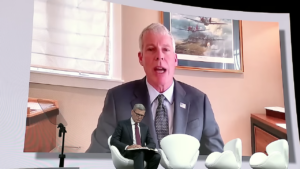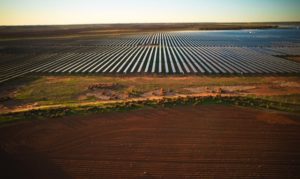The NSW Coalition government has reaffirmed a commitment to an ambitious ramp-up of wind, solar and storage capacity in the state of up to 17,700MW as being key to the state’s path to achieving zero net emissions by 2050.
In the Net Zero Plan Stage 1: 2020–2030 released on the weekend, the NSW government has detailed how the state government will work to leverage $2 billion in funds secured under a bilateral deal with the Morrison government to accelerate the deployment of the state’s first Renewable Energy Zone.
The NSW government identified a set of core priorities for the next ten years of energy system development, at the centre of which is the deployment of “proven emissions reduction technologies”, which will see the state support increases in wind and solar generation as it deals with the looming exit of its coal generation fleet.
As announced in January, the NSW government will seek to establish a 3,000MW pilot Renewable Energy Zone in the state’s central-west region, around the township of Dubbo,
In its newly released Net Zero Plan, the NSW government outlines how it will also progress work to establish an additional two Renewable Energy Zones, based in the South-West and New England regions of the State, delivering up to a combined 17,700MW of new clean energy generation and storage capacity.
“Where there are technologies that can reduce both our emissions and costs for households and businesses, we want to roll them out across the State. Where these technologies are not yet commercial, we want to invest in their development so they will be available in the decades to come,” energy minister Matt Kean said at the launch of the plan.
Each zone will potentially support several thousand megawatts of wind, solar and storage projects, along with coordinated investments in transmission network infrastructure that will link the regions rich with wind and solar resources with the rest of the National Electricity Market.
The South West Renewable Energy Zone will be based around the regional township of Hay, and has the potential to attract as much as 4,950MW of additional generation capacity,
The New England Renewable Energy Zone, centred around the town of Armidale, that the NSW government also expects could support an additional 5,500MW of new generation capacity, building upon the strong presence of wind generation that has already been established in the region.

The zones mirror those proposed by the Australian Energy Market Operator, and subsequently detailed in the NSW government’s Transmission Infrastructure Strategy, which identified the regions as having good access to high quality wind and solar resources, that could be coordinated with new investments in additional transmission network capacity.
Coordinating these investments could work to avoid the grid connection challenges that are currently plaguing some regions within the National Electricity Market, particularly western Victoria which has seen projects delayed or curtailed to manage constraints within the local network infrastructure.
Under the plan to 2030, the NSW government is looking to leverage as much as $11.6 billion in private sector investment to help deliver its plan.
In the longer term, these zones could deliver more than double this amount, with much as to $23 billion in private sector investment directed into the Renewable Energy Zones alone, in new energy infrastructure, create more than 2,000 long-term construction jobs, and more than covering for the looming closure of the Liddell coal-fired powers station and any others that follow.
The NSW government will detail plans for the implementation of the strategy at a future date, delivering “detailed delivery plans” and are likely to include a process for auctioning network access within the Renewable Energy Zones. The proceeds raised through the network capacity auction will be used towards the establishment of the zone itself.
NSW Labor climate change and energy spokesperson Adam Searle said that the details of the plan’s implementation were crucial, and without out it the plan remained weak.
“Every element of this package has been announced in the past – they have just been rebadged and repackaged. These measures will not cut emissions by 35 per cent by 2030. Mr Kean had a golden opportunity to announce new measures. This is just disappointing,” Searle said.
“The longer the Berejiklian Government takes to begin real action on climate change, the longer it will take to cut emissions and energy bills, and give NSW the massive economic benefits that will come with decarbonising the economy.”
The NSW government will rely on this significant investment in new clean energy capacity to deliver the bulk of the emissions reductions needed to reach an interim reduction target of 35 per cent below 2005 levels by 2030.
According to government figures, NSW has already achieved reductions of 13 per cent on 2005 levels, and investments in large-scale energy projects will deliver an additional 27.7 million tonnes in annual emissions reductions, representing about three-quarters of the remaining abatement challenge to 2030.










